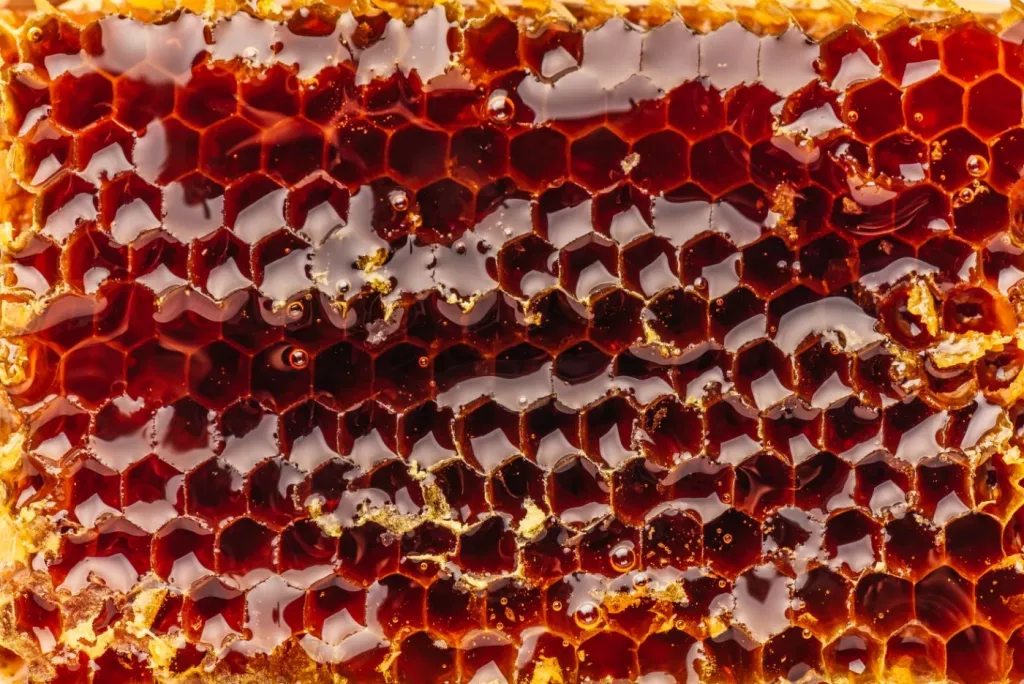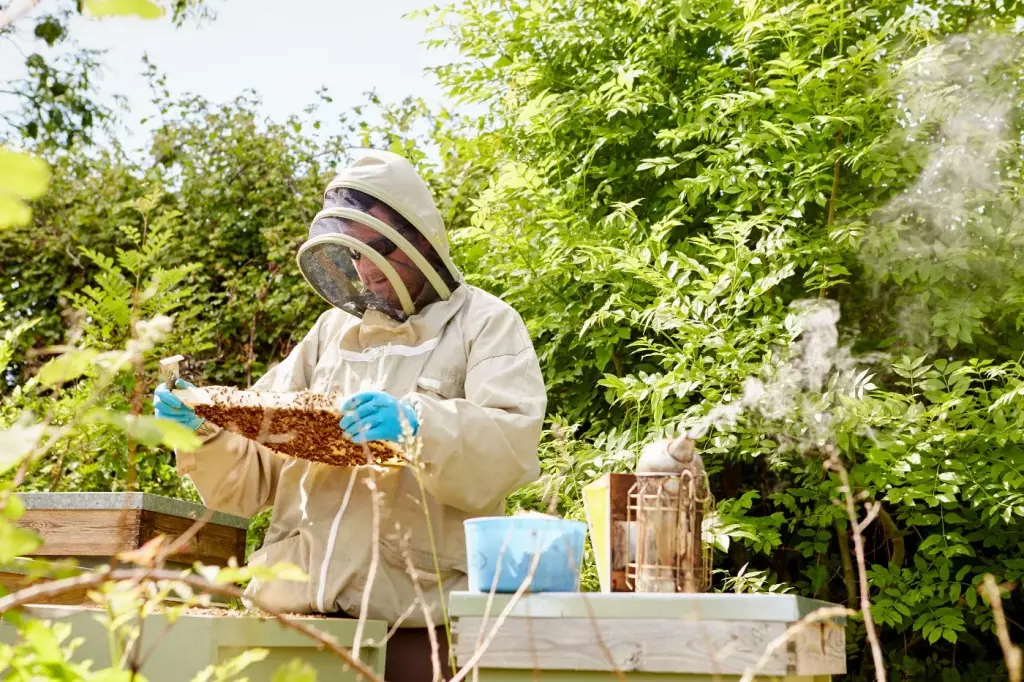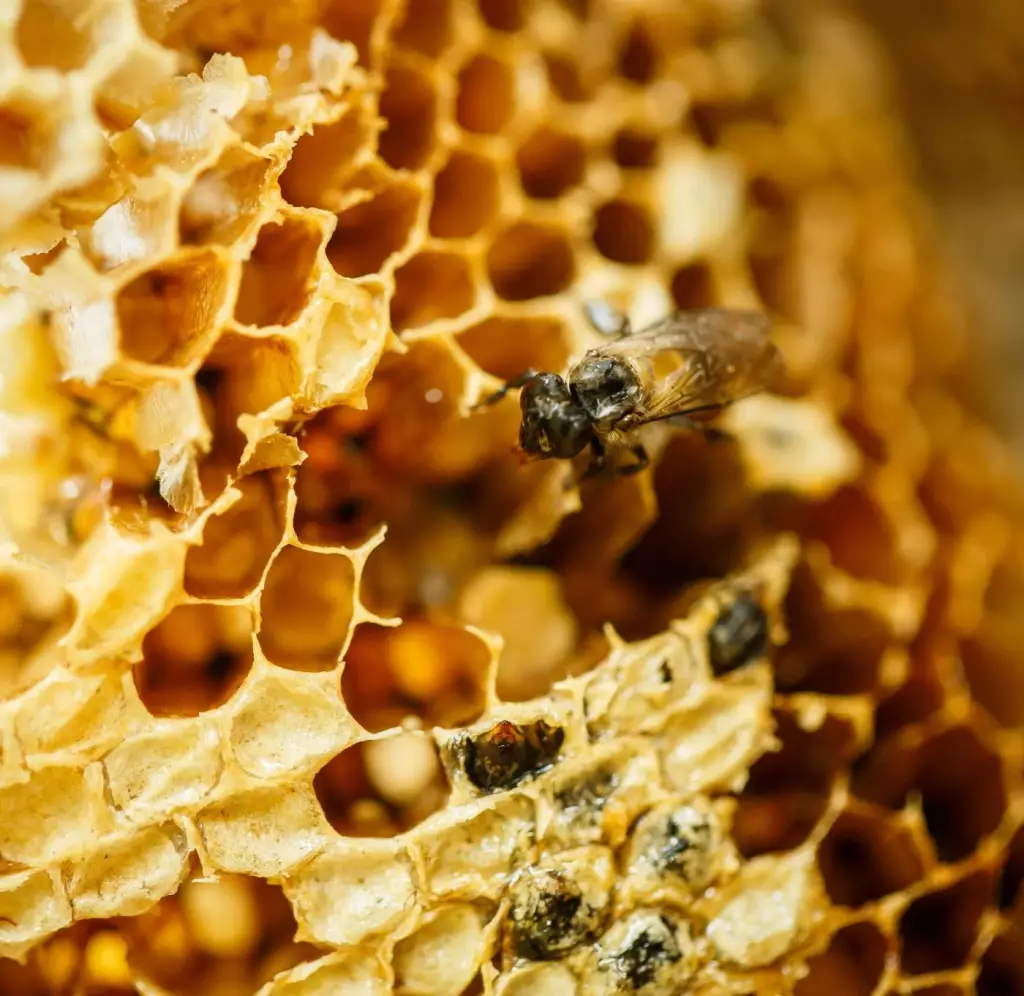How To Get Bees To Make More Honey - 7 Surprising Ways
With the right knowledge and techniques, it is possible to increase your beehive's honey production significantly. In this article, we will discuss seven surprising techniques you can use to get more honey from your beehive.
You can increase honey production by improving the hive's health by keeping your hives clean and pest-free, allowing the hive a large foraging radius, maintaining the right hive temperature and humidity, and planting pollen-rich plants nearby, thereby increasing the hive's population.
We will discuss the nitty-gritty of how to get there, as well as some of the lesser-known tricks for getting more honey from your bees.
Summary

On this page:
- The Importance Of Having Healthy Bees To Make More Honey
- Provide Access to Healthy Plants To Make More Honey
- Provide an Adequate Water Source
- Maintain Appropriate Temperature and Humidity
- Keep the Hive Free of Pests
- Use Quality Beekeeping Supplies
- Skilled and Well-Trained Beekeepers
- Knowing Methods To Attract And Keep More Bees In Your Colony
The Importance Of Having Healthy Bees To Make More Honey
Healthy bees are a key component of successful honey production. When bees are healthy they can work more efficiently and produce larger amounts of honey. Diseases and parasites, such as the Varroa mite, can weaken the bees and reduce their ability to produce honey. The use of pesticides can also be detrimental to bee health and can cause them to be less productive. To ensure healthy bees, beekeepers must practice good beekeeping practices such as monitoring for diseases, providing adequate nutrition and providing clean hives.
To get bees to make more honey, we will elaborate on these seven tips:
- Provide Access to Healthy Plants
- Provide an Adequate Water Source
- Maintain Appropriate Temperature and Humidity
- Keep Hive Free of Pests
- Use Quality Beekeeping Supplies
- Skilled and Well-trained Beekeepers
- Knowing Methods To Attract And Keep More Bees In Your Colony
Healthy bees are essential for making more honey and to ensure healthy bees, beekeepers must exercise excellent beekeeping practices to guarantee a successful honey-making process and the result of an abundant supply of honey.
Provide Access to Healthy Plants To Make More Honey
Providing access to healthy plants is a key factor in making more honey, providing a source of food and nutrition for honeybees. When the plants are in good condition, they are able to produce more nectar, which is an important part of a honeybee’s diet. By getting a hold to healthier plants, the bee colonies have more resources to produce and store more honey.
There are actually plenty of plants that will improve honey production.
In order to ensure that the honeybees can get to healthy plants, it is important to provide adequate nutrition for the plants. This can be done through proper fertilization, irrigation and pest control. Additionally, it is important to create a healthy environment for the plants to grow. This includes keeping the plants sheltered from strong winds, providing them with enough sunlight, and ensuring that they have adequate access to water.
Provide an Adequate Water Source
Providing an adequate water source is essential as bees need water to be able to produce more honey, so it is important that they have a steady supply of water nearby. The best way to ensure they have enough water is to provide them with a shallow bowl or container, this should be placed close to the hive and refilled regularly. Additionally, it is important to make sure that the water is not too deep and that there are no sharp edges that can harm the bees so they are able to access the water easily.
If you cannot provide them with a water source, you can also place a damp cloth or sponge in their hive. This will give them a source of moisture and can help. You can also plant flowers or shrubs near the hive that will attract natural water sources such as dew or rain.

Maintain Appropriate Temperature and Humidity
Maintaining appropriate temperature and humidity ensures a successful honey production process. Honey producers should strive to keep the hive temperatures between 90°F and 96°F, and humidity between 50% and 70%.
When temperatures are too hot, the bees will become too active and potentially cause nectar to spoil. High temperatures can also cause the comb to become too soft, reducing the quality of the honey. Humidity is also an essential factor in maintaining honey production. Too low humidity will cause the honey to crystallize quickly, reducing the quality and Too high humidity can cause condensation inside the hive, which can cause the nectar to spoil.
It is important to monitor the temperature and humidity within the hive to ensure optimal honey production. Beehives should be located in a sheltered area to protect them from extreme temperatures and to provide some natural humidity. Additionally, producers should use a digital thermometer and hygrometer to measure the temperature and humidity inside the hive.
Keep the Hive Free of Pests
Keeping bees free of pests is essential to producing more honey. The most common pest in a beehive is the Varroa mite, which can spread quickly amongst the hive and weaken the bees. To keep a hive free of Varroa mites, beekeepers should periodically inspect the hive for signs of mites, and use a variety of treatments and tests to help control the mite population. For example, beekeepers can test for Varroa mites using the sugar shake method.
Beekeepers can also use screened bottom boards to help trap mites and make them easier to spot. Additionally, beekeepers can use an Integrated Pest Management system that includes the use of natural treatments and the selective breeding of bees that are more resistant to mite infestations. By using a combination of these treatments and regular inspections, beekeepers can help keep their hives free of mites and other pests, increasing the chances of producing more honey.
Use Quality Beekeeping Supplies
Using quality beekeeping supplies to make more honey is an important part of successful beekeeping. Good beekeeping equipments can help ensure that bees have the resources they need to produce a high-quality, abundant honey harvest. It also help protect the bees from pests and diseases, as well as help keep their hives in good condition.
When choosing supplies for beekeeping, the most important factors to consider are the materials used, the standard of the components, and how easy the supplies are to use. Beekeeping supplies should be made from durable materials such as stainless steel, which is corrosion-resistant and long-lasting. Quality components should be easy to assemble and use, with an ergonomic design that makes manipulating the hive easier, and also be easy to clean and maintain.

Skilled and Well-Trained Beekeepers
Beekeepers must have a thorough understanding of the behavior of the bees, the needs of the hive, and the techniques and methods used to maintain the health of the hive. They must be able to recognize signs of disease and pests, develop strategies for treating them, and implement practices that promote the health of the colony.
A good beekeeper with the goal of producing more honey must be able to identify the stages of the colony’s life cycle, and be able to identify and recognize the different types of bees in the hive. They must also be able to properly manage the hive and its resources, as well as understand how to harvest honey, pollen, and wax.
In addition to understanding the behavior of bees, beekeepers must also be adept at managing the equipment used in beekeeping. This includes understanding the proper use of beekeeping suits and protective gear, as well as the tools and equipment used to inspect and maintain the hive. They must also be familiar with the techniques and methods used to manipulate the hive, such as adding frames, transferring bees between hives, and administering treatments.
Knowing Methods To Attract And Keep More Bees In Your Colony
Attracting and keeping more bees in your colony is essential for producing more honey. There are several methods you can use to make your colony a desirable place for bees to live. One of the best ways to attract bees is to provide them with a variety of food sources, planting a variety of flowers and other plants with different colors and scents will attract a variety of bee species and more.
Creating a sheltered area for your bees is also important. Installing a windbreak or adding vegetation to provide shade for the hive will help to protect the bees from the elements. Adding some bee houses to the area will also provide the bees with additional shelter and a safe place to rest.
Finally, regularly checking and maintaining your hive is essential. Make sure to remove any debris or dead bees that may have accumulated around the hive, as this can attract predators. Additionally, make sure to check the hive for any signs of disease or other problems that could be affecting the bees. Taking these steps will help to ensure that your colony is a safe and healthy environment for the bees, increasing the chances that they will stay in your colony and produce more honey.